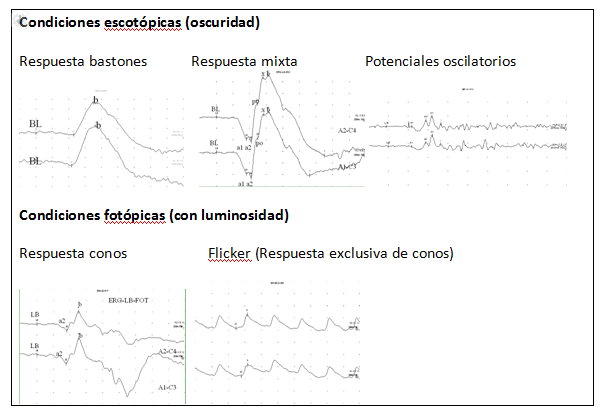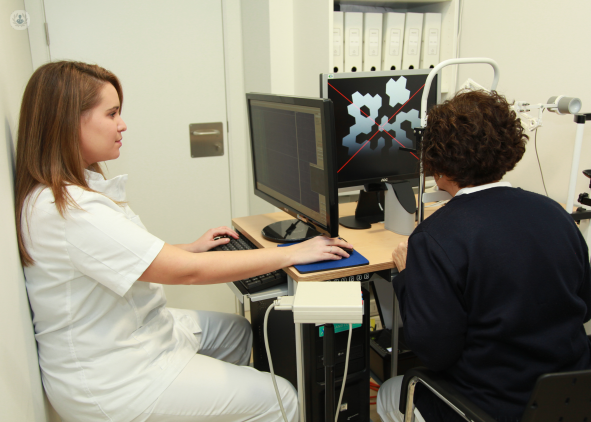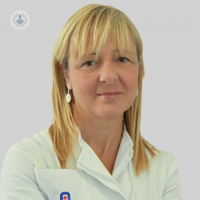Electroretinography and Electro-oculogram: Neurophysiology techniques for the diagnosis of eye diseases
Written by:Retinopathies and macular diseases can be diagnosed through certain techniques of Neurophysiology. The technique applied will depend on the suspected pathology can suffer the patient.There are several techniques in neurophysiology that detect eye diseases. The indication of each of these scans will depend on the suspected pathology:
Full field electroretinography Ganzfeld (GERG):
It is consisting of corneal recording of the electrical response of the retina to a diffuse mass light stimulus. Valued at scotopic conditions (darkness) and photopic (with light) the response of the rods, cones, as well as amacrine cells, bipolar and Muller. We used to diagnose multiple retinopathy.The technique involves obtaining 5 basic answers, standardized by the Society for Clinical Electrophysiology of Vision (ISCEV):- Response canes- Maximum response rods and cones- Oscillatory potentials in scotopic conditions (dark)- Cone response- Flicker in photopic conditions (light)The waves obtained would be how are you:

With checkerboard pattern electroretinography (PERG) to simultaneously record visual potential:
Corneal consists registration response central retina to a stimulus that selectively stimulate structured ganglion cells located in the macula. The indications are PERG maculopathy. Simultaneous recording of cortical response allows us to make differential diagnosis between maculopathy and optic neuropathy.The technique involves correcting refractive errors by lenses or glasses, if used, and collaboration is needed to stare. Waves would get the following:

The simultaneous realization allows us to automatically determine the P100-P50 interval (driving through visual pathway) and assess if it is increased, as in the case of neuropathy.
Multifocal electroretinography (mfERG):
Retinal Stimulation simultaneously for a topographic map of the density response of the retina 20-30 ° central. The waves are mathematical inferences obtained from each stimulated area and no direct retinal responses. Its fundamental guidelines are maculopathy.The stimulus is done with black and white hexagons of increasing size.

The results can be presented as a map of waves in which each wave activity represents an area of the posterior pole or groups which can be:- Concentric rings around the fovea- quadrants- A three-dimensional figure is characteristically a pyramidal shape with an area of maximum density at the peak response

Multifocal ERG Clinical Applications: The main indication is in maculopathy, not only to detect the loss of the central role, but to define the extent and depth of the lesion.Among the varied pathology helps us in the diagnosis of acquired retinopathy (macular degeneration, diabetic retinopathy, central serous chorioretinopathy, macular hole, toxicity drugs such as antimalarials or vibatrina, trauma, vascular disorders ... ) or hereditary (Retinitis pigmentosa, congenital stationary night blindness, retinoschisis sex-linked, achromatopsia, cone dystrophy or canes, of Stargadt disease, among others).
Electro-oculogram (EOG):
It is a record of the resting potential between the retina and the cornea, induced ocular movement with respect to the electrodes and which varies according to the level of backlighting. Assesses the role of pigment epithelium and its main indication for suspected disease or macular Best Vitelliform disk.


